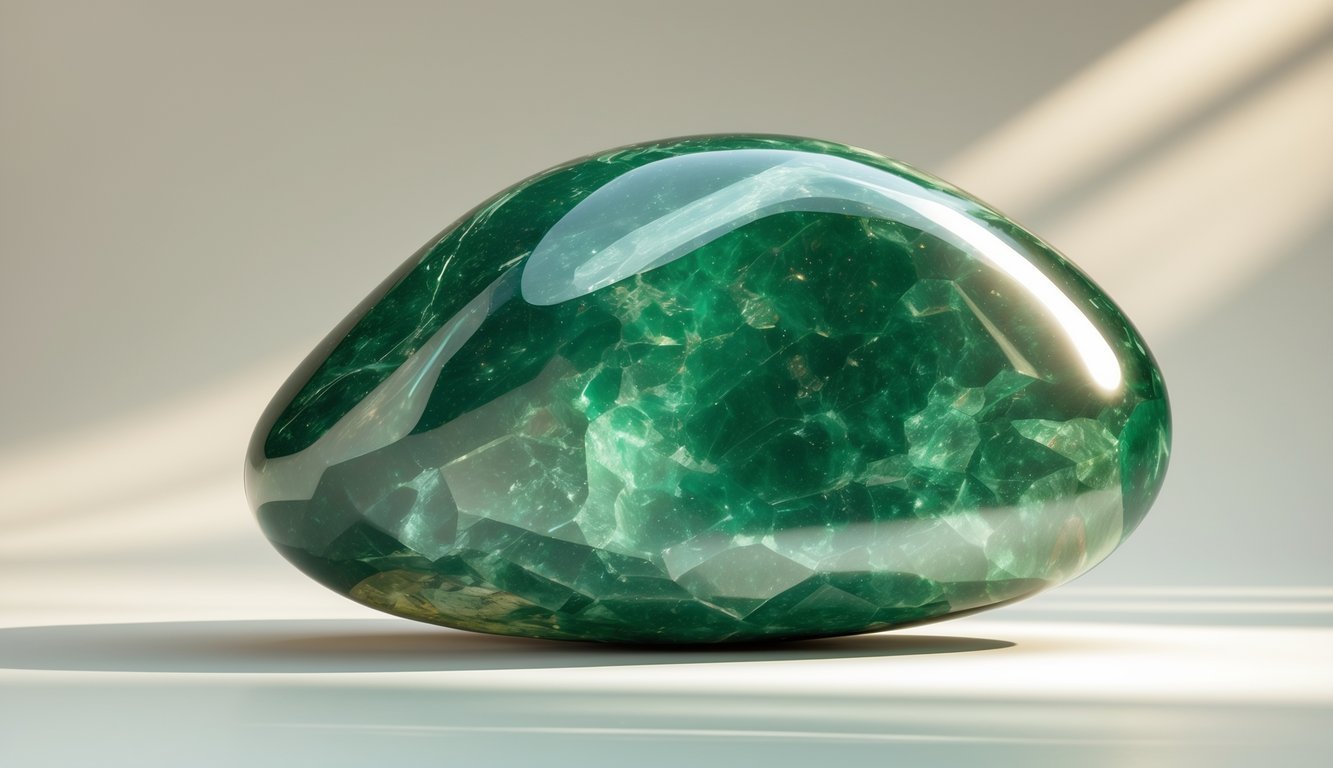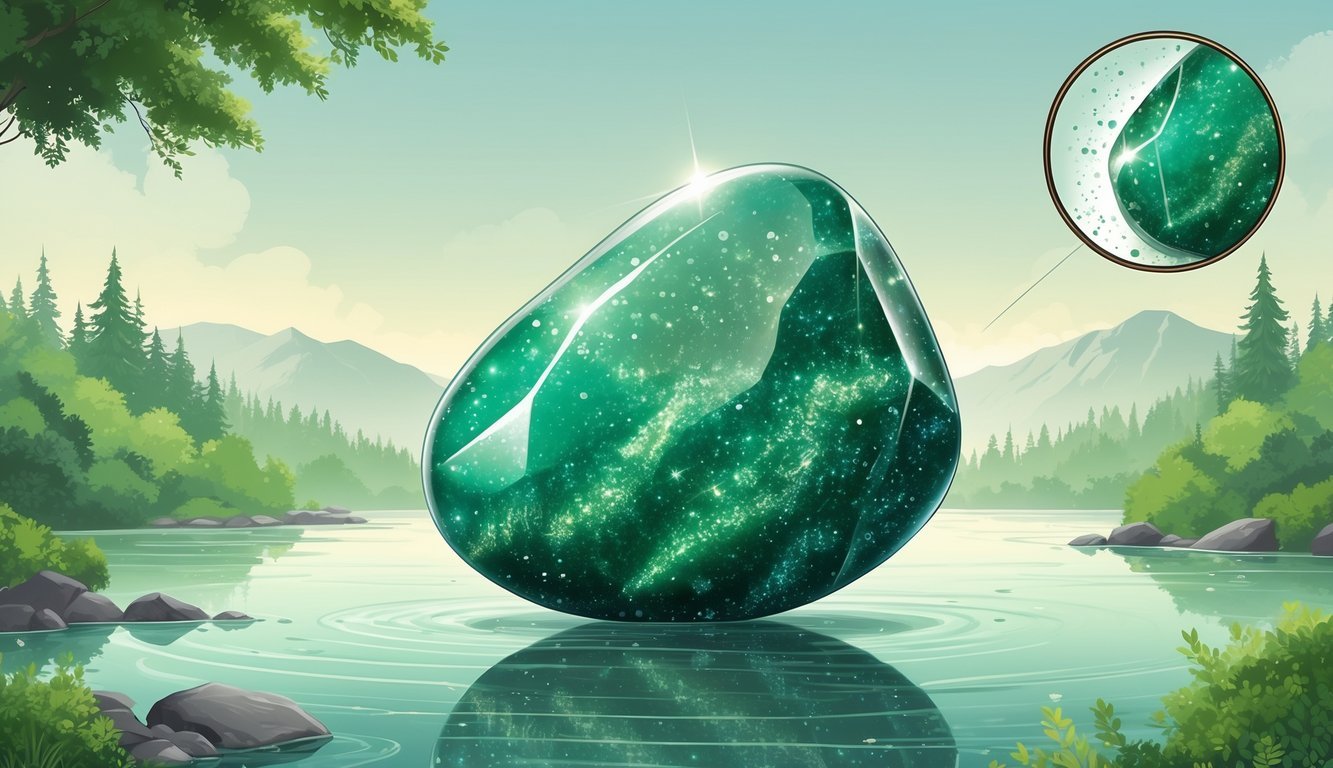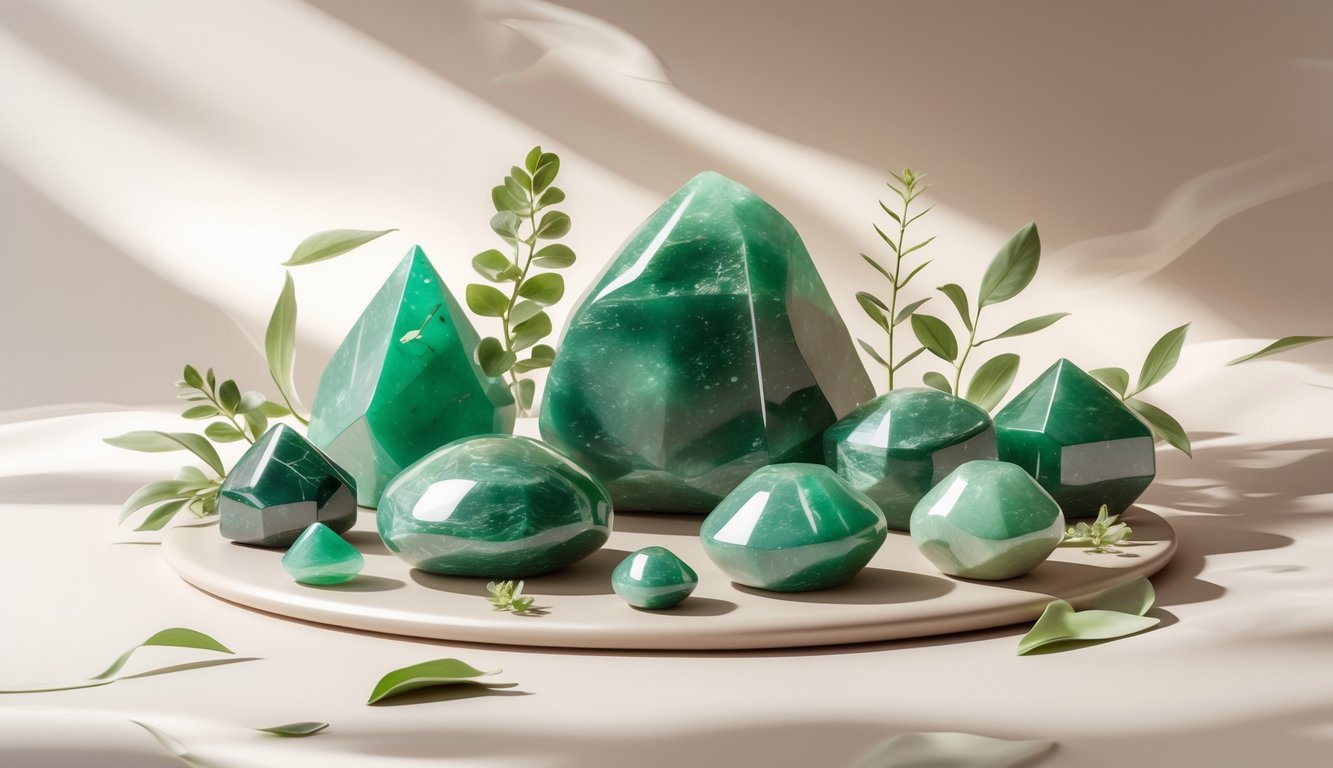PsychNewsDaily Publishers
100 Summit Drive
Burlington, MA, 01803
Telephone: (320) 349-2484
PsychNewsDaily Publishers
100 Summit Drive
Burlington, MA, 01803
Telephone: (320) 349-2484
Aventurine, a unique quartz gemstone, features green hues and sparkling inclusions, symbolizing luck, emotional balance, and growth while promoting positive energy and well-being.

Aventurine is a one-of-a-kind stone, famous for its sparkling look and calming energy.
You’ll spot its soft green shades and those glimmering flecks—tiny minerals that catch the light just right.
People often reach for this stone to boost courage, lift their confidence, or just bring a little more hope into their day.
Folks have always loved aventurine for its power to soothe emotions and spark growth or good luck.
Whether you wear it or keep it close by, it’s said to help balance your energy and nudge your mood in a positive direction.
If you’re curious about how aventurine can shift your mindset or vibe in your space, learning a bit about its story and uses is a solid place to start.
This simple stone has more going on than just looks—it might just inspire you in small but meaningful ways.

Aventurine is a special type of quartz that gets its shimmer from tiny minerals inside.
You’ll find it in lots of colors, and it’s a favorite for jewelry and carvings.
People have dug it up all over the world, and each spot offers a slightly different take on aventurine.
Aventurine is mostly quartz, which is a tough mineral that sticks around for ages.
Its chemical formula is silicon dioxide (SiO₂).
Tiny bits of mica, feldspar, or hematite inside the quartz make each stone unique.
These flat, shiny inclusions reflect light and give aventurine its signature sparkle—what gem folks call aventurescence.
Because aventurine is built on quartz, it’s got a strong crystal structure.
The minerals inside don’t really change its makeup, but they do add a ton of visual interest.
That combo makes aventurine both sturdy and eye-catching.
Aventurine comes in a bunch of colors.
Green is the classic, but you’ll also find blue, red, orange, brown, yellow, pink, and even white.
Green aventurine owes its color to chromium-rich mica flakes.
Blue aventurine gets its cool hue from dumortierite inclusions.
The crystal structure matches quartz, with a hexagonal system.
Some stones are see-through, while others are pretty much opaque.
The shimmer really pops in cabochons or carved pieces.
Miners pull aventurine out of the ground in all sorts of places.
India is famous for its green aventurine, especially near Mysore and Chennai.
Other big sources include Brazil, Russia, Spain, and Chile.
A few deposits in Italy even gave aventurine its name after someone stumbled across a sparkly bit of glass by accident.
Tibetan artists have carved aventurine into statues and spiritual items for ages.
The color and quality change from place to place, so collectors sometimes seek out stones from specific regions for that perfect look.
Aventurine holds up well, with a hardness of about 6.5 to 7 on the Mohs scale.
It resists scratches, so you can use it in jewelry without much worry.
Depending on how many minerals are inside, it can be a little see-through or totally opaque.
The main visual feature is that glittery aventurescence—light bouncing off those flat inclusions.
That’s what makes aventurine sparkle in sunlight or under a lamp.
You’ll often spot it shaped into cabochons or small statues, thanks to its shine and toughness.
| Property | Description |
|---|---|
| Hardness | 6.5 – 7 (Mohs scale) |
| Transparency | Translucent to opaque |
| Mineral Inclusions | Mica, feldspar, hematite |
| Common Colors | Green, blue, red, orange, brown |
| Crystal System | Hexagonal |
These qualities make aventurine a super versatile and good-looking stone, no matter how you use it.

People link aventurine with luck and prosperity.
It’s more than just a pretty face; many say it helps balance emotions and promote well-being.
It’s got a reputation for growth and heart-centered energy, which makes it handy for all kinds of needs.
Folks call aventurine the Stone of Opportunity because they believe it draws in luck and abundance.
Some say it boosts your chances for success and wealth by making you feel braver and more sure of yourself.
Aventurine works closely with the heart chakra, so it’s all about harmony, compassion, and emotional healing.
It might help ease anxiety or calm negative emotions, nudging you toward inner peace and a brighter outlook.
If you use it while meditating or for crystal healing, it could support spiritual growth and emotional balance.
It’s said to encourage positive energy and help you take action on your goals—who wouldn’t want that?
You can wear aventurine in all sorts of ways—think earrings, bracelets, or necklaces.
The green is striking and stands for growth and renewal.
When you wear it close to your heart, some believe it keeps the healing vibes nearby.
Aventurine also works as a pocket stone or as a small desk accessory.
It can set a calm, positive tone and maybe even spark some creativity or focus.
With its mix of beauty and meaning, aventurine makes an awesome daily talisman.
You can carry it, wear it, or just put it wherever you want a little extra luck and balance.
The name “aventurine” comes from the Italian a ventura, or “by chance.”
That fits, considering its sparkly look comes from random mineral flashes—almost like little bursts of luck.
People have used aventurine for thousands of years across different cultures.
They saw it as a comfort stone that brought hope and strength, especially in tough moments.
Some old stories say aventurine helps shift your perspective and brings more happiness.
Warriors carried it for courage, and others wore it hoping for wealth or good luck.
If you want aventurine to look its best, just clean it gently with warm, soapy water and a soft cloth.
Skip harsh chemicals or extreme heat—they can mess it up.
When picking out a stone, look at the color and clarity.
The richest greens are usually the most prized, but don’t sweat small differences.
To refresh its energy, you can rinse aventurine under running water or leave it in sunlight for a bit.
Some people like smudging it with sage or setting it on salt to cleanse it.
Taking care of your aventurine helps it keep supporting your well-being and positive energy.

Aventurine is known for its healing and spiritual uses.
It shows up in a bunch of colors, each with its own vibe.
There’s a connection to zodiac signs, and people often compare it to jade.
Prices can be all over the place, depending on the type you’re after.
Aventurine is thought to help with emotional healing by calming your mind and easing stress.
Some say it supports heart health and can improve sleep.
Many people use it to feel more balanced and at ease.
You can use aventurine to open your heart chakra and support emotional growth.
People often carry it or set it in meditation spaces to bring calm and positive vibes.
Some include it in rituals to attract luck and success.
Green aventurine is the most popular and stands for growth and renewal.
Blue aventurine is all about mental clarity and communication.
Red aventurine connects to energy and vitality, while peach or orange aventurine can boost creativity and confidence.
Aventurine is linked to signs like Aries, Leo, and Sagittarius because it’s said to boost courage and motivation.
If you want to feel more confident or balanced in your choices, you might find it helpful.
It’s believed to support qualities tied to those signs.
Both stones are green and associated with luck and healing.
Aventurine is quartz-based and has a sparkly shimmer, while jade feels denser and smoother.
People often use jade for protection and wisdom, while aventurine is seen as a stone for growth and new chances.
Prices really depend on color, clarity, and size. Green Aventurine tends to be the most affordable option.
If you’re after something like blue or red Aventurine, you’ll probably notice those cost a bit more. The quality of the cut and polish can bump up the price too.